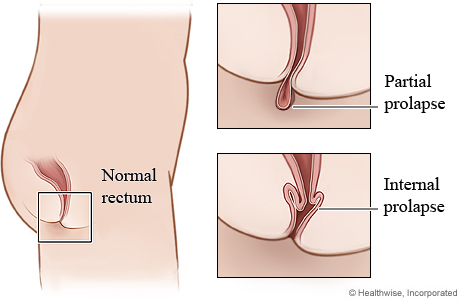Rectal prolapse is a medical condition in which the rectum (the last part of the large intestine) loses its normal attachments inside the body and protrudes outside the anus. This can happen to varying degrees, ranging from a partial prolapse where only the inner lining of the rectum is visible outside the body to a complete prolapse where the entire rectum extends outside the anus.

There are different types of rectal prolapse:
1.Partial Prolapse (Mucosal Prolapse): Only the inner lining of the rectum protrudes.
2.Complete Prolapse: The entire rectum extends through the anus.
3.Internal Prolapse (Intussusception): The rectum collapses, but it doesn't protrude outside the body.
The causes of rectal prolapse can include:
- Chronic constipation: Straining during bowel movements over a long period can contribute to the weakening of the rectal support tissues.
- Chronic diarrhea: Conditions such as inflammatory bowel disease (IBD) can lead to repeated episodes of diarrhea, which may contribute to prolapse.
- Childbirth: In women, the muscles and ligaments supporting the rectum can be damaged during childbirth.
- Aging: Weakening of pelvic floor muscles and tissues can occur with age.
Symptoms of rectal prolapse may include:
- Protrusion of tissue through the anus: This may happen during bowel movements and retract afterward.
- A feeling of a bulge or fullness in the rectum: Especially after standing or walking.
- Difficulty controlling bowel movements (fecal incontinence).
- Blood or mucus in stool.
Treatment options for rectal prolapse depend on the severity of the condition. Mild cases may be managed with dietary changes, pelvic floor exercises, and medications. In more severe cases, surgical intervention may be necessary to repair the prolapsed rectum.
If you suspect you have a rectal prolapse or are experiencing symptoms, it's crucial to consult with a healthcare professional for a proper diagnosis and appropriate treatment options.
